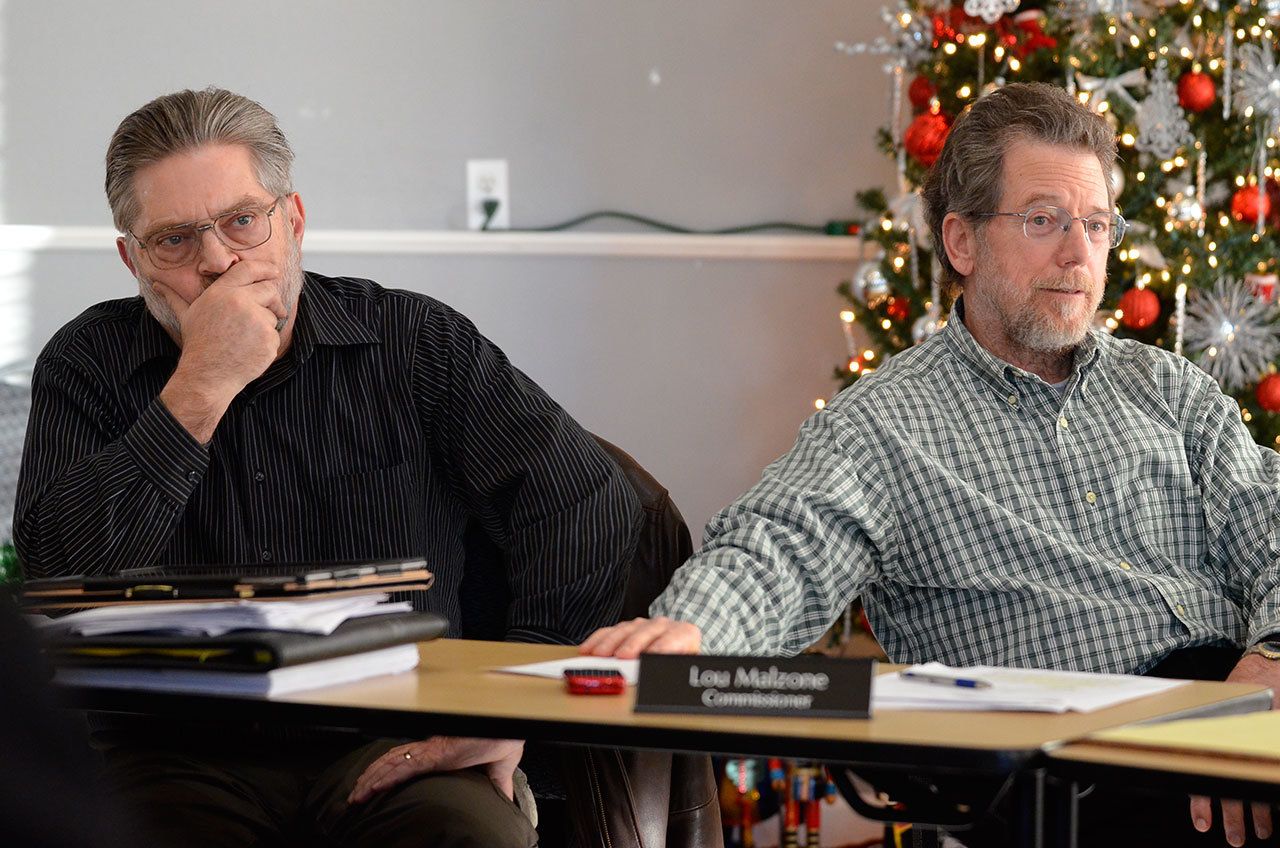Despite significant and looming funding problems, the Freeland Water and Sewer District commissioners unanimously agreed this week to resume the phase 1A sewer project.
The board approved a $226,450 contract Tuesday evening for additional soil testing at the district’s 24-acre property between Highway 525 and Scenic Avenue. The decision was made at the board’s regular monthly meeting, following a two-hour workshop earlier that afternoon with paid consultants and county and state experts. The testing won’t answer the larger funding questions, the impetus for December’s decision to halt work, but it will gather needed data on drainage and infiltration rates.
“We’re putting one foot in front of the other and then we’ll see the results,” said board President and Commissioner Lou Malzone, in a later interview with The Record.
He also said the decision was made with the nod of permitting officials and hired specialists who attended the earlier workshop.
“We decided to green light this proposal because that’s the advice we got from the state, the county and our own hydrologist,” he said.
The testing will see the drilling of two vadose zone wells, the district’s chosen mechanism for draining treated effluent back into the ground. The pilot wells, which can later be incorporated into the working system, aim to “further refine” infiltration capacity data gathered from a December 2015 study. The test will also see the drilling of companion monitoring wells, compiling soil data, infiltrating water over 30 days and evaluating the results.
The work should wrap up by the end of March.
The contract is with Arlington-based Gray &Osborne, Inc., the district’s hired engineering firm for the project. Pacific Groundwater Group, a Seattle subcontractor, will do much of the actual testing.
Gray &Osborne has been the district’s engineer for the past several years, since the commissioners resumed work on the project. It’s the same consultant that recommended the use of vadose zone wells for the property, an infiltration system that’s been used almost nowhere in Washington and resulted in about $1 million in unexpected expenses.
Last year, Gray &Osborne engineers alerted district commissioners that the wells would require an additional $800,000 for them to work. A $200,000 infiltration study was also needed. That ballooned the district’s long cited $10.2 million price tag by about 10 percent and swelled the cost to ratepayers; a December rate study showed property owners would pay monthly about $150 per unit of water (equivalent residential unit, or ERU), on top of an initial $6,700 hookup fee.
As a result, the board halted all further design work until Tuesday’s meeting where commissioners received no objections to proceed with the infiltration tests.
Island County Commissioner Helen Price Johnson did ask the district’s engineers, however, why they recommended the wells in the first place. Along with uncertainty about infiltration on the property, questions have arisen about their estimated lifespan and the associated costs of maintaining them.
J. Glenn Mutti-Driscoll, a hydrologist from Pacific Groundwater Group, explained that testing showed traditional pond systems lacked the capacity needed for the commercial core. The district, he said, wanted to stick with the property so they looked for alternatives.
“The next thought was, ‘We can try vadose wells,’ ” Mutti-Driscoll said.
Eric Nutting, a project engineer with Gray &Osborne, added that it was likely the most affordable.
“There’s other options, but we chose the vadose wells because they were the cheapest with the greatest chance to succeed,” Nutting said.
Incidentally, the rate study also made clear that the project cost of $10.2 million the district has used publicly for more than a year was incomplete. According to Malzone, that number didn’t include some expenses, including one major one — the $800,000 the district spent on the 24-acre property it purchased from Jerry Stonebridge early last year. The property is for the new treatment plant and the drainage area that district officials now worry won’t work with vadose wells.
The total cost of the phase 1A project is now estimated at $12.4 million.
Tuesday’s workshop saw no objection from the public about costs. In fact, those who spoke encouraged the board to move forward. Leanne Finlay, an area real estate agent, called a $6,700 hookup fee a “royal bargain” when compared to the cost of repairing a septic system. Andy Campbell, the water district’s manager, said some customers may feel differently since they have already paid fees for their septic systems.
“Who cares?” Finlay said. “Their properties become more valuable.”
Commercial property owner Steve Myres echoed the sentiment, saying the land in phase 1A is all commercially zoned. A sewer system creates value and a potential for new growth.
“Let’s go,” he said.
He also expressed frustration that Freeland is larger than Langley and Coupeville, contributes more in sales taxes, yet can’t seem to get a sewer system in the ground.
Price Johnson responded by saying, “It’s a dynamic of being in an unincorporated area.”
Malzone said the project still has significant hurdles ahead. Even if the infiltration testing provides the best infiltration news, it doesn’t do anything to address the $6.25 million budget gap. The district hopes to get $3 million from the state, about $2.5 million from the county ($160,000 for 16 years) and the remaining $1.5 million from ratepayers.
District commissioners are planning to hold a public meeting in March to go over the December rate study and the funding challenges with property owners. It’s hoped that the pilot test data will also be available for presentation.



